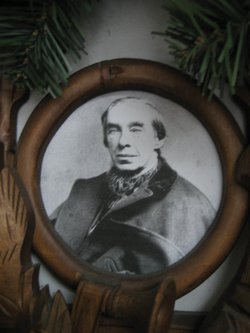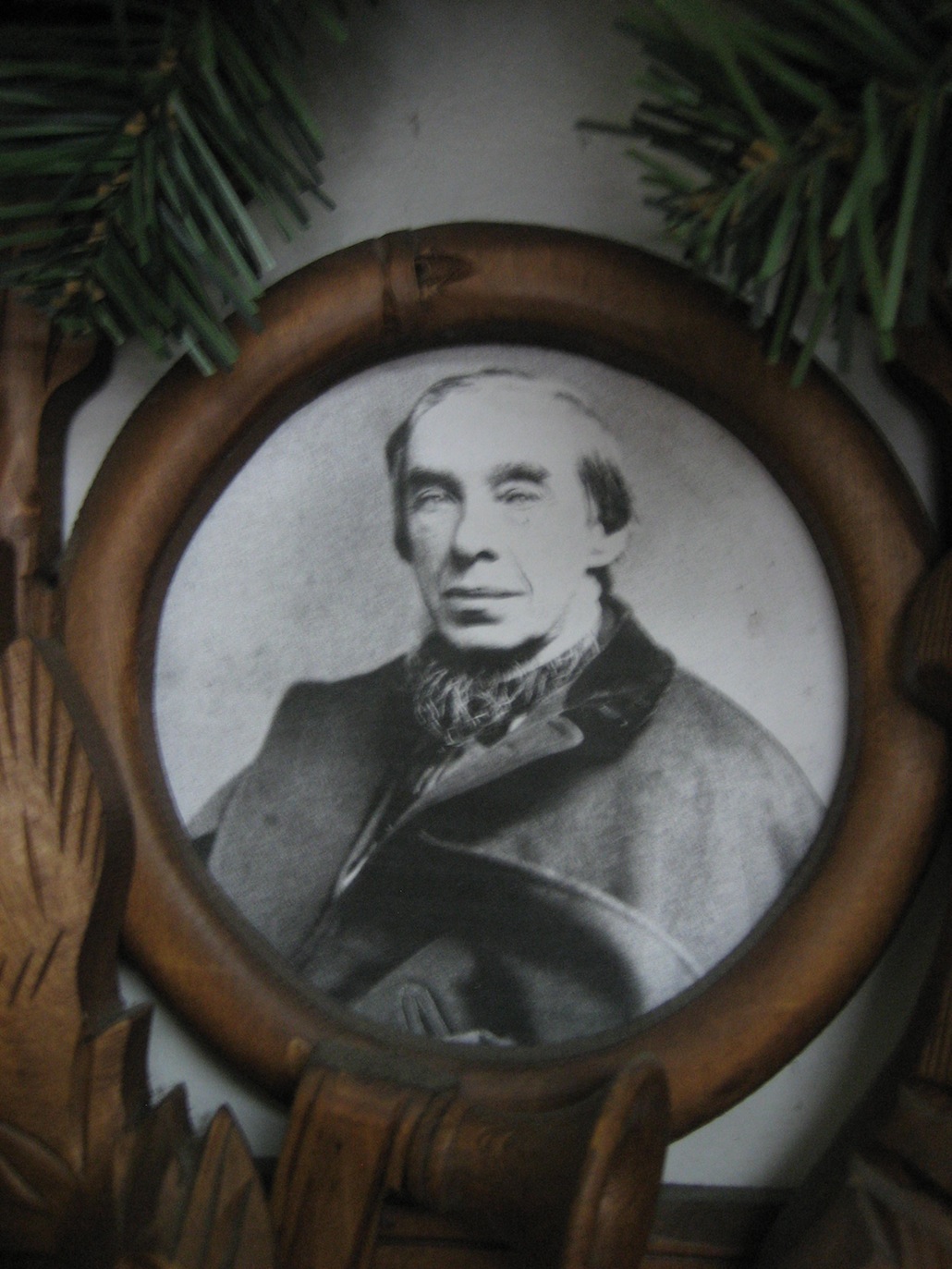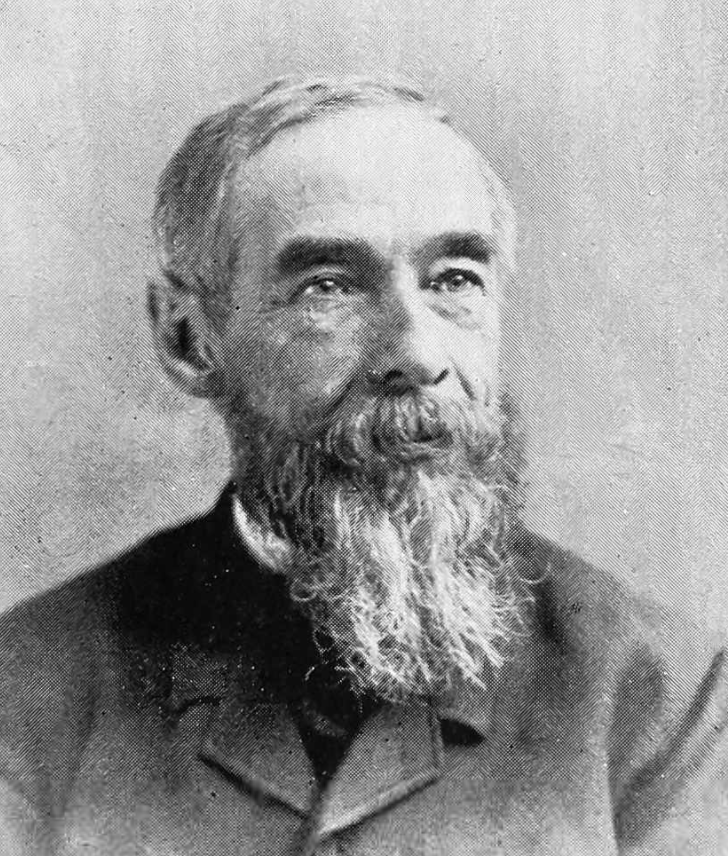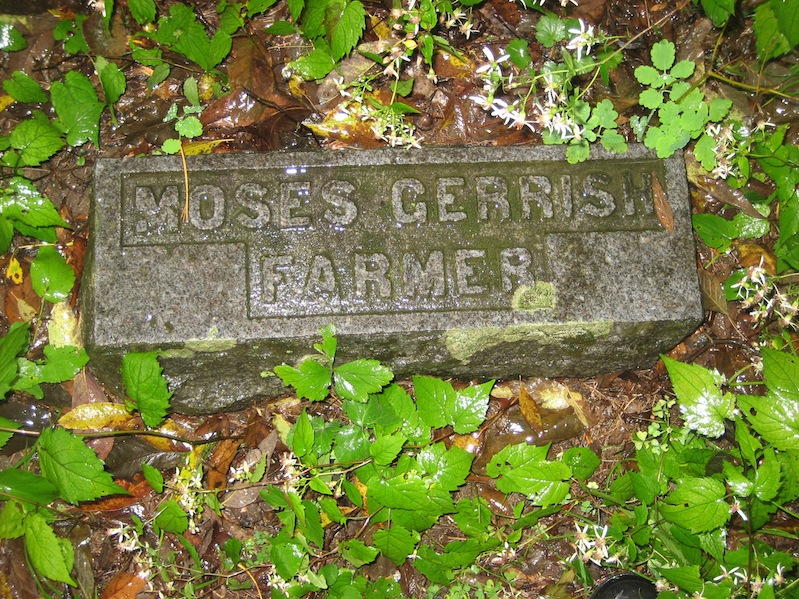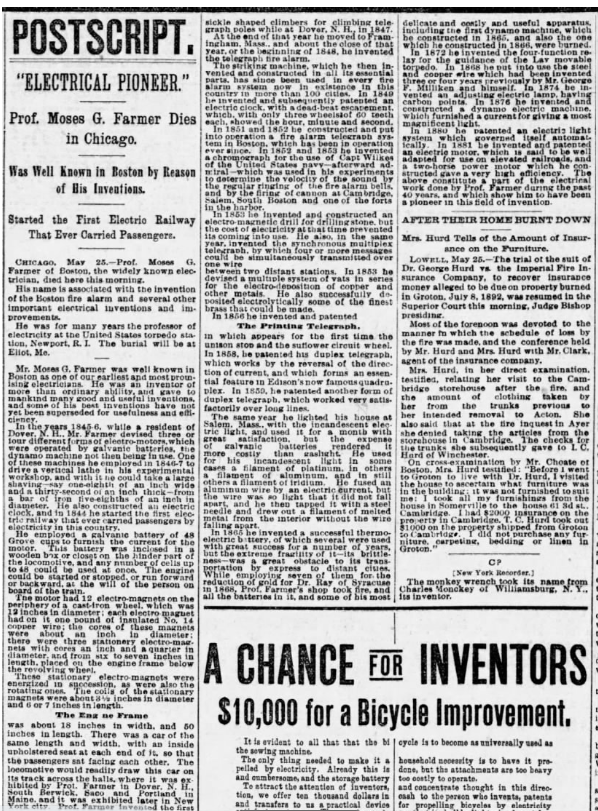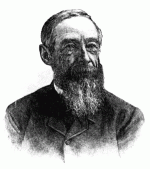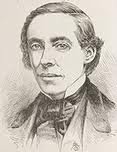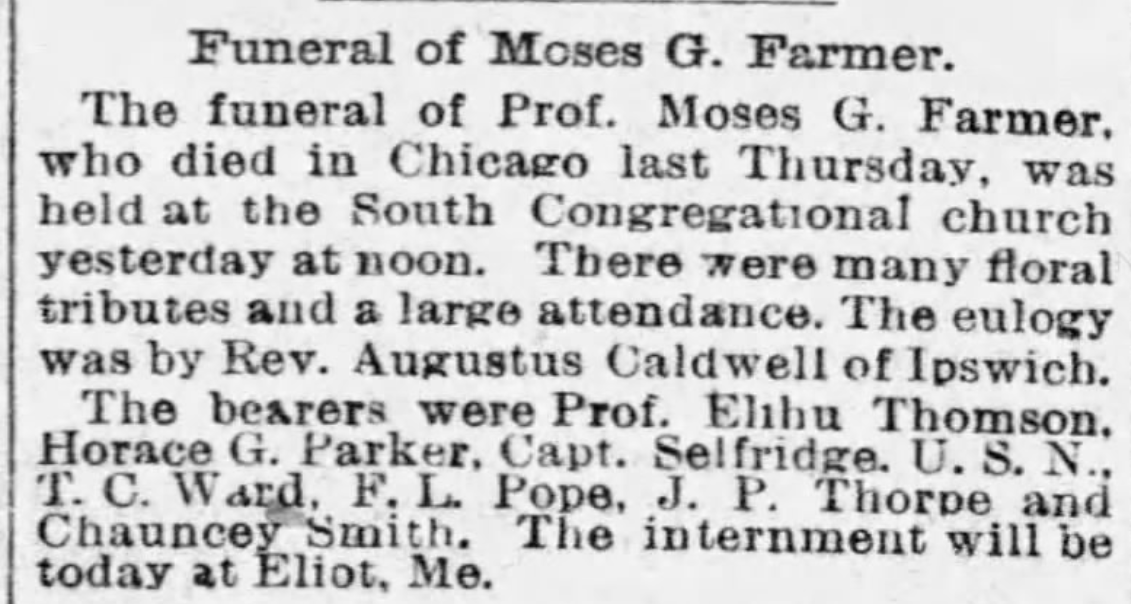Sally Gerrish b. 26 Oct 1790
Grandson of John Farmer b. 7 Dec 1737 and Sarah Russell b. abt 1751
American inventor and manufacturer, pioneered in the practical applications of electricity.
He developed devices an electric clock, a method of electroplating aluminum. His most dramatic success was lighting a house in Cambridge, Mass., in 1868, with 40 of his incandescent lamps. In 1872 his proposals for detonating naval torpedoes by an electric charge led to his appointment as electrician at the U.S. Torpedo Station in Newport, R.I.
He died while on a visit to the 1893 World's Columbian Exposition in Chicago, where he was exhibiting some of his inventions.
Boscawen New Hampshire Inventor, Prof. Moses Gerrish Farmer (1820-1893)
Posted on 24 May, 2006 by Janice Brown
When asked who invented the electric light bulb, most people say Thomas Edison…
This simply is not true.
In 1868, eleven years before Edison patented his version of the light bulb, Moses Farmer, with a dynamo of his own invention, illuminated a room of his house (in Salem Massachusetts) for several months–this was the first known case of domestic incandescent lighting.
Moses is probably most famous for developing and patenting (with William F. Channing) the first electric fire alarm system, installed in 1852 in Boston, Massachusetts.
Moses Gerrish Farmer, son of Col. John and Sally (Gerrish) Farmer was born in Boscawen, NH, 9 February 1820. He attended Phillips Academy, Andover MA in the autumn of 1837. He entered Dartmouth College in 1840 remaining there three years, leaving on account of ill health. The degree of A.M. was later conferred upon him by the faculty of Dartmouth in 1853. He married 25 Dec 1844 to Miss Hannah T. Shapleigh, dau of Richard Shapleigh of Berwick Maine. He removed to Elliot ME where he was preceptor of the Academy there, and later to a similar job at Belknap School in Dover New Hampshire. In the December of 1847 he moved to Framingham MA to be closer to his work. In July 1848 he moved to Salem, Massachusetts. In Oct 1872 he accepted the professorship of electrical science a the U.S. Naval Torpedo Station, established in 1869 in Newport, Rhode Island, for the instruction of officers of the navy in electricity and chemistry, as applied to the arts of war. He died in Chicago, IL on May 25, 1893. [An article about his wife and daughter will be posted at a later date].
Highlights & Accomplishments: He helped build and maintain some of the pioneer telegraph lines of Massachusetts and experimented in multiple telegraphy. He exhibited (1847) an electric train that carried children, invented a process for electroplating aluminum, and installed (1851) in Boston the first electric fire-alarm service in any city. His later years were spent chiefly in developing the incandescent electric light. Twenty years before Edison's success he produced (1858-59) electric lamps, and in 1868, with a dynamo of his own invention, he illuminated a room of his house (in Salem) for several months–first first known case of domestic incandescent lighting. He is probably most famous for developing and patenting (with William F. Channing) the first electric fire alarm system in Boston, Massachusetts (installed in 1852).
Additional Experiments: These began in 1845 when he invented an electro-magnetic engine. In 1846 he constructed a small electro-magnetic locomotive, also a small railroad track, and exhibited it in various towns and cities with accompanying lectures, and demonstrating how the principle could be used with torpedoes and sub-marine blasting. At his first lecture in Dover, New Hampshire, he below up a miniature ship, placed in a washbowl of water, using electricity. In 1846 he invented the hook or sickle-shaped climber for the use of telephone line repairers, in climbing poles. In 1859 he created an electro-magnetic clock. He was adept in electro-metallurgy, and in 1855 he successfully deposited aluminum form its chloride solution (the first to do so). He continually improved and upgraded the telegraph process. In 1852-3 he made many experiments upon rheostates, voltomerts and magnetometers. In 1853 he received a patent on an improved porous cell for galvanic batteries.
If you learn one thing today, it is that several people invented light bulbs before Edison did, including one genius inventor, Moses Gerrish Farmer of New Hampshire.
From a fellow contributor:
FARMER, Moses Gerrish, pioneer electrician. His earlies ancestors in America were Isabella (Barbage) Farmer (widow of John Farmer) and her son Edward who was born in Ansley, Warwickshier, Emgland, in 1641, and came to Billerica, Mass., 1970-73; and Capt. William Gerrish who was born in Bristol, Somersetshire, England, in 1617, came to New England in 1639 and was married to Mrs. Joanna Oliver, widow of John Oliver of Newbury. Moses attended Phillips academy Andover, Mass., 1837-1840, and Dartmouth college, 1840-43, illness preventing him from graduation of the latter. He taught school in Eliot, Main, and at Dover, N.H., until 1847. In 1845 he began the study of electrical science with reference to its industrial application and laid the foundation for electrical engineering in the United States. He invented several electro-motors and in 1846 constructed a miniature railroad track and electro-magnetic engine which he exhibited for the first time, July 26, 1847, in Dover, N.H., and the later in various towns, lecturing upon the subject of electro-magnetism and its applications. In December, 1847, he wasw emploed at South Framington, Mass., with F.O.J. Smith, who was engaged in construcitn the telegraph line form New York to Boston, and in July, 1848, he removed to Salem, Mass., where he had charge of the telegraph office till 1849, when he left it to open some new offices on the Vermont and Boston line, beginning at Manchester, N.H. While there, he invented the open circuit automatic repeater.
In South Framington, he invented an electric striking device for a fire-alarm service which he exhibited in Boston in 1849. In 1851 he planned and constructed the telegraph fire-alarm system in Boston and was its superintendent till 1853. In 1849 he made an electro-magnetic clock with dead beat escapement and continuity-preserving circuit breaker, which was in use in the Boston fire-alarm office many years. Prior to 1850 he invented an electric grid broiler upon which he broiled steak. Between 1852 and 1855 he constructed an apparatus by which he was enabled to transmit four messages simultaneously over a single wire; devised the printing telegraph; was the first to make use of the "unison stop"; and the first to suggest the use of the continuity-preserving key in the duplex telegraph. In 1852-53 he constructed an instrument for determining the velocity of sound. In 1855 he successfully deposited aluminum from its chloride solution, which had never been accomplished before, and also deposited copper in a condition both hard and brittel, a great achievement in the electro-metallurgy. in 1856 he constructed for the Dudly observatory, Albany, N.Y. a chronograph and a system fo electric clocks. In 1856 he commenced the business of electrotyping, and produced the first under-cut electrotype in America, from a gutta-percha mould. In 1857-58, he invented the automatic repeater and the double current system of duplex telegraphy, the automatic regulator for incandescent lighting systems, and devised an electro-magnetic apparatus to show the height of water in steam boilers. In July, 1859, he lighted the parlor of his home in Salem, Mass., In September, 1859, he discovered the law of the (now-called) "self-exciting dynamo" and between that time and 1866 built the first dynamo machine, "an invention which," says Prof. A.E. Dolbear, "has made possible all the electrical industries of today." With the machine in 1868 he lighted a private residence in Cambridge, Mass., with forty incandescent lamps in multiple series with the absolute regulation at the dynamo. Between 1864 and 1868 he perfected a thermo-electric battery and in 1868 constructed the largest one over built for the deposition of copper upon steel to the produce of the American-compound telegraph wire. In the later part of 1869 he was employed to examine and report upon the condition of the land lines and cables of the New York, Newfoundland and London telegraph company, and as a result of these investigations invented a new insulator.
In 1860-63 he made alloys of aluminum with copper and other metals which closely remember 18 karat gold and which is now in common use among jewelers. He was the professor of electrical science at the U.S. naval torpedo station at Newport, R.I., 1872-81, and invented the machines for firing torpedoes. He removed because of ill health and removed to Eliot, Maine. He was married, Dec. 25, 1844, to Hannah Tobey, daughter of Richard Shapleigh of Berwick, Maine, and their only daughter, Sarah Jane, established in 1894 the Greenacre Assembly at Greenacre-on-the-Piscataqua, Eliot, Maine, and in 1896 at the same place the Monsalvat school for the comparitive study of religion. Mr. Farmer was a fellow of the American academy of the arts and sciences, a member of the Institute of technology, of the Essex institute, of the American English institute of mechanical engineers, and of the English institution of electrical engineers, and was the first American elected to honorary membership by the American institute of electrical engineers. He received the honorary degree of A.M. from Dartmouth in 1853 and was elected a member of the American associations for the advancement of science in 1855. He died in Chicago, Ill., May 25, 1893.
Source: The Twentieth Century Biographical Dictionary of Notable Americans. Howard, Rossitier, The Biographical Society, 1904. Boston.
Sally Gerrish b. 26 Oct 1790
Grandson of John Farmer b. 7 Dec 1737 and Sarah Russell b. abt 1751
American inventor and manufacturer, pioneered in the practical applications of electricity.
He developed devices an electric clock, a method of electroplating aluminum. His most dramatic success was lighting a house in Cambridge, Mass., in 1868, with 40 of his incandescent lamps. In 1872 his proposals for detonating naval torpedoes by an electric charge led to his appointment as electrician at the U.S. Torpedo Station in Newport, R.I.
He died while on a visit to the 1893 World's Columbian Exposition in Chicago, where he was exhibiting some of his inventions.
Boscawen New Hampshire Inventor, Prof. Moses Gerrish Farmer (1820-1893)
Posted on 24 May, 2006 by Janice Brown
When asked who invented the electric light bulb, most people say Thomas Edison…
This simply is not true.
In 1868, eleven years before Edison patented his version of the light bulb, Moses Farmer, with a dynamo of his own invention, illuminated a room of his house (in Salem Massachusetts) for several months–this was the first known case of domestic incandescent lighting.
Moses is probably most famous for developing and patenting (with William F. Channing) the first electric fire alarm system, installed in 1852 in Boston, Massachusetts.
Moses Gerrish Farmer, son of Col. John and Sally (Gerrish) Farmer was born in Boscawen, NH, 9 February 1820. He attended Phillips Academy, Andover MA in the autumn of 1837. He entered Dartmouth College in 1840 remaining there three years, leaving on account of ill health. The degree of A.M. was later conferred upon him by the faculty of Dartmouth in 1853. He married 25 Dec 1844 to Miss Hannah T. Shapleigh, dau of Richard Shapleigh of Berwick Maine. He removed to Elliot ME where he was preceptor of the Academy there, and later to a similar job at Belknap School in Dover New Hampshire. In the December of 1847 he moved to Framingham MA to be closer to his work. In July 1848 he moved to Salem, Massachusetts. In Oct 1872 he accepted the professorship of electrical science a the U.S. Naval Torpedo Station, established in 1869 in Newport, Rhode Island, for the instruction of officers of the navy in electricity and chemistry, as applied to the arts of war. He died in Chicago, IL on May 25, 1893. [An article about his wife and daughter will be posted at a later date].
Highlights & Accomplishments: He helped build and maintain some of the pioneer telegraph lines of Massachusetts and experimented in multiple telegraphy. He exhibited (1847) an electric train that carried children, invented a process for electroplating aluminum, and installed (1851) in Boston the first electric fire-alarm service in any city. His later years were spent chiefly in developing the incandescent electric light. Twenty years before Edison's success he produced (1858-59) electric lamps, and in 1868, with a dynamo of his own invention, he illuminated a room of his house (in Salem) for several months–first first known case of domestic incandescent lighting. He is probably most famous for developing and patenting (with William F. Channing) the first electric fire alarm system in Boston, Massachusetts (installed in 1852).
Additional Experiments: These began in 1845 when he invented an electro-magnetic engine. In 1846 he constructed a small electro-magnetic locomotive, also a small railroad track, and exhibited it in various towns and cities with accompanying lectures, and demonstrating how the principle could be used with torpedoes and sub-marine blasting. At his first lecture in Dover, New Hampshire, he below up a miniature ship, placed in a washbowl of water, using electricity. In 1846 he invented the hook or sickle-shaped climber for the use of telephone line repairers, in climbing poles. In 1859 he created an electro-magnetic clock. He was adept in electro-metallurgy, and in 1855 he successfully deposited aluminum form its chloride solution (the first to do so). He continually improved and upgraded the telegraph process. In 1852-3 he made many experiments upon rheostates, voltomerts and magnetometers. In 1853 he received a patent on an improved porous cell for galvanic batteries.
If you learn one thing today, it is that several people invented light bulbs before Edison did, including one genius inventor, Moses Gerrish Farmer of New Hampshire.
From a fellow contributor:
FARMER, Moses Gerrish, pioneer electrician. His earlies ancestors in America were Isabella (Barbage) Farmer (widow of John Farmer) and her son Edward who was born in Ansley, Warwickshier, Emgland, in 1641, and came to Billerica, Mass., 1970-73; and Capt. William Gerrish who was born in Bristol, Somersetshire, England, in 1617, came to New England in 1639 and was married to Mrs. Joanna Oliver, widow of John Oliver of Newbury. Moses attended Phillips academy Andover, Mass., 1837-1840, and Dartmouth college, 1840-43, illness preventing him from graduation of the latter. He taught school in Eliot, Main, and at Dover, N.H., until 1847. In 1845 he began the study of electrical science with reference to its industrial application and laid the foundation for electrical engineering in the United States. He invented several electro-motors and in 1846 constructed a miniature railroad track and electro-magnetic engine which he exhibited for the first time, July 26, 1847, in Dover, N.H., and the later in various towns, lecturing upon the subject of electro-magnetism and its applications. In December, 1847, he wasw emploed at South Framington, Mass., with F.O.J. Smith, who was engaged in construcitn the telegraph line form New York to Boston, and in July, 1848, he removed to Salem, Mass., where he had charge of the telegraph office till 1849, when he left it to open some new offices on the Vermont and Boston line, beginning at Manchester, N.H. While there, he invented the open circuit automatic repeater.
In South Framington, he invented an electric striking device for a fire-alarm service which he exhibited in Boston in 1849. In 1851 he planned and constructed the telegraph fire-alarm system in Boston and was its superintendent till 1853. In 1849 he made an electro-magnetic clock with dead beat escapement and continuity-preserving circuit breaker, which was in use in the Boston fire-alarm office many years. Prior to 1850 he invented an electric grid broiler upon which he broiled steak. Between 1852 and 1855 he constructed an apparatus by which he was enabled to transmit four messages simultaneously over a single wire; devised the printing telegraph; was the first to make use of the "unison stop"; and the first to suggest the use of the continuity-preserving key in the duplex telegraph. In 1852-53 he constructed an instrument for determining the velocity of sound. In 1855 he successfully deposited aluminum from its chloride solution, which had never been accomplished before, and also deposited copper in a condition both hard and brittel, a great achievement in the electro-metallurgy. in 1856 he constructed for the Dudly observatory, Albany, N.Y. a chronograph and a system fo electric clocks. In 1856 he commenced the business of electrotyping, and produced the first under-cut electrotype in America, from a gutta-percha mould. In 1857-58, he invented the automatic repeater and the double current system of duplex telegraphy, the automatic regulator for incandescent lighting systems, and devised an electro-magnetic apparatus to show the height of water in steam boilers. In July, 1859, he lighted the parlor of his home in Salem, Mass., In September, 1859, he discovered the law of the (now-called) "self-exciting dynamo" and between that time and 1866 built the first dynamo machine, "an invention which," says Prof. A.E. Dolbear, "has made possible all the electrical industries of today." With the machine in 1868 he lighted a private residence in Cambridge, Mass., with forty incandescent lamps in multiple series with the absolute regulation at the dynamo. Between 1864 and 1868 he perfected a thermo-electric battery and in 1868 constructed the largest one over built for the deposition of copper upon steel to the produce of the American-compound telegraph wire. In the later part of 1869 he was employed to examine and report upon the condition of the land lines and cables of the New York, Newfoundland and London telegraph company, and as a result of these investigations invented a new insulator.
In 1860-63 he made alloys of aluminum with copper and other metals which closely remember 18 karat gold and which is now in common use among jewelers. He was the professor of electrical science at the U.S. naval torpedo station at Newport, R.I., 1872-81, and invented the machines for firing torpedoes. He removed because of ill health and removed to Eliot, Maine. He was married, Dec. 25, 1844, to Hannah Tobey, daughter of Richard Shapleigh of Berwick, Maine, and their only daughter, Sarah Jane, established in 1894 the Greenacre Assembly at Greenacre-on-the-Piscataqua, Eliot, Maine, and in 1896 at the same place the Monsalvat school for the comparitive study of religion. Mr. Farmer was a fellow of the American academy of the arts and sciences, a member of the Institute of technology, of the Essex institute, of the American English institute of mechanical engineers, and of the English institution of electrical engineers, and was the first American elected to honorary membership by the American institute of electrical engineers. He received the honorary degree of A.M. from Dartmouth in 1853 and was elected a member of the American associations for the advancement of science in 1855. He died in Chicago, Ill., May 25, 1893.
Source: The Twentieth Century Biographical Dictionary of Notable Americans. Howard, Rossitier, The Biographical Society, 1904. Boston.
Family Members
Advertisement
Advertisement
